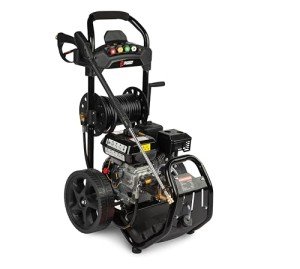The Comprehensive Guide to Power Tools: Understanding Their Types, Uses, and Maintenance
Power tools are important in the modern-day workshop, making it possible for tasks that would otherwise be tiresome and lengthy when performed with hand tools. Ranging from standard drills to intricate woodworking makers, power tools provide performance and accuracy that can drastically change the method professionals and enthusiasts approach their jobs. This post checks out the different types of power tools, their applications, upkeep ideas, and frequently asked questions.
Kinds Of Power Tools
Power tools are usually categorized into 2 main groups: cordless and corded. Each type has its benefits and ideal usages.
1. Cordless Power Tools
Cordless tools run on rechargeable batteries, offering higher mobility and ease of use. Some common types include:
- Cordless Drill/Driver: Essential for drilling holes and driving screws, a cordless drill is a must-have in any tool kit.
- Cordless Circular Saw: Ideal for cutting lumber and other products, particularly when portability is needed.
- Cordless Jigsaw: Useful for making complex cuts and curves in different materials.
- Cordless Impact Driver: Perfect for driving long screws and fasteners into difficult products quickly.
2. Corded Power Tools
While corded tools may be less portable, they typically supply more power and are often used for heavier-duty tasks. Key examples include:
- Table Saw: A stationary tool that uses precision cutting for woodworking jobs.
- Miter Saw: Used for making accurate crosscuts and miters in a workpiece.
- Angle Grinder: Useful for cutting or grinding metal and concrete.
- Drill Press: A fixed drill that enables for accomplishing higher accuracy in drilling holes.
Comparison Table of Cordless and Corded Power Tools
| Feature | Cordless Power Tools | Corded Power Tools |
|---|---|---|
| Movement | High | Restricted by power cord |
| Power | Less effective | More effective |
| Weight | Lighter due to lack of cable | Heavier due to motor and cord |
| Battery Life | Limited by battery life | Continuous power supply |
| Cost | Generally more pricey | Usually more affordable |
Applications of Power Tools
Power tools are used across different markets and activities. Comprehending the ideal tool for the task can improve performance and results. Some common applications consist of:
- Construction Projects: Drills, saws, and nailers dominate job sites for framing and roofing.
- Woodworking: Routers, sanders, and jointers help in developing complex and refined wood pieces.
- Automotive Repair: Impact wrenches and air compressors are crucial for dealing with cars.
- Home Improvement: DIY lovers utilize numerous tools for renovations, repairs, and landscaping jobs.
Popular Power Tools and Their Uses
Here are some often utilized power tools together with their primary applications:
Power Drill:
- Used for drilling holes and fastening screws.
- Is available in numerous sizes for different applications.
Reciprocating Saw:
- Ideal for demolition work and cutting through materials like wood, metal, and drywall.
Sander:
- Used for smoothing surface areas, available in numerous types such as orbital and belt sanders.
Router:
- Employed in woodworking for hollowing out an area in a piece of wood.
Nail Gun:
- A fast and effective tool for driving nails into wood and other materials.
Maintenance Tips for Power Tools
Keeping power tools in ideal condition is vital for safety and efficiency. Here are some upkeep suggestions:
- Regular Cleaning: Dust and particles can accumulate in power tools. Regular cleaning helps keep efficiency and extends tool life.
- Check Connections and Cords: Regularly look for fraying or damage to cables and connections. Replace any damaged parts right away to prevent accidents.
- Hone Blades and Bits: Dull blades can decrease performance and accuracy. Routine honing ensures tidy cuts and faster operation.
- Lubrication: Certain tools require routine lubrication. Consult the user manual for specific recommendations.
- Storage: Store tools in a dry environment and in their cases if readily available. This safeguards them from moisture and unexpected damage.
Frequently Asked Questions (FAQs)
1. What security gear should be worn when using power tools?
- It is important to use suitable safety equipment such as safety glasses, hearing protection, gloves, and a dust mask depending upon the tool in usage.
2. How do powertoolsonline.uk choose the best power tool for a task?
- Think about the particular tasks you need to accomplish, the material you'll be working with, and the tool's power capacity. Researching tools fit for those tasks will aid in making the best choice.
3. Are cordless tools as great as corded tools?
- Cordless tools provide benefit and mobility, while corded tools offer more power for much heavier tasks. Pick based upon your specific requirements.
4. How typically should power tools be kept?
- Regular maintenance needs to be carried out frequently, preferably after every usage. Comprehensive inspections and maintenance need to be done at least as soon as a year.
5. What is the lifespan of a typical power tool?
- The life-span of power tools varies extensively depending upon usage and quality however generally varies from 5 to 15 years.
Power tools are valuable assets for both specialists and DIY enthusiasts, providing efficiency and accuracy unlike any hand tool. Comprehending the different types, applications, and maintenance treatments is essential for optimizing their prospective and ensuring safety. With correct care and understanding, these tools can serve users effectively for many years, ultimately improving efficiency and job outcomes. By investing in quality tools and adhering to maintenance rituals, one can make the most out of every task, irrespective of size or complexity.

